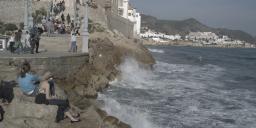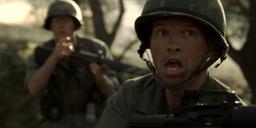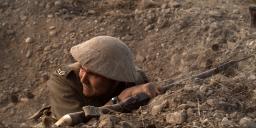
Please, support PV!
It allows to keep PV going, with more focus towards AI, but keeping be one of the few truly independent places.
It allows to keep PV going, with more focus towards AI, but keeping be one of the few truly independent places.
Panasonic GH1 - Film Mode Settings
-
***I'm unsure as to whether or not it's proper etiquette to start a new thread for this question, so Vitaliy by all means feel free to move or delete this thread with instructions on how to get this question answered.***
Anyway, I was hoping to get some information on the "best" "Film Mode" settings (Panasonic terminology) also known as "Picture Style" (Canon terminology) for un-hacked AND hacked GH1 to later achieve the most accurate "Filmic" look. In my research on Google I've not found a very straight forward answer for the GH1. There is much talk on the Canon side of things to achieve this, particularly by using Marvels picture style or something of the like. So I was hoping to get some input on some experts in the forum related to the GH1 Film Mode to achieve this.
As I understand it, one wants to use settings that will achieve the most flat picture as possible along with settings to achieve proper exposure and such based on environment so that there is more dynamic range for the color grading process, is this correct? Now I know that to achieve an overall filmic look recording needs to take place at 24p and 1/48th of a sec or close to it (1/50th for GH1), I'm just looking for comment on the Film Mode/Picture Style.
As most, I'm hoping to have as much control in post of colors and latitude as possible to achieve the film look, and I realize this process begins in camera. Thanks in advance for any input. -
I can tell you one thing.
Obsession with filmic look become something like mental illness :-)
As a resulf, we have bunch of short extremely strange, pointless, small DOF, so called "artictic" clips on Youtube and Vimeo.
It is not necessary to repeat approach used by pros by shooting flattest possible setting always.
You must understand if you actually need this, if your footage really require postprocessing (and how much it'll cost), etc.
Film mode is really special setting(most probably table or few of tables) in the RAW to actual image conversion process. You can try them all and see that is most suitable for you. -
>I await the day DSLRs will have the DR of the RED Epic or the Alexa.
I am awaiting the day most people owning the HDSLRs start shooting something worth looking at.
Films with thing that is called content, that nring you some new information.
DR is not the limiting factor here :-) -
I get what you are saying Vitaliy, it's the content of the film, not necessarily how the film looks. I couldn't agree more with you, but if the content is already available, why not shoot it as beautifully as possible? Push the tools at your disposal to their limits? Some of the most beautiful art I've seen was created with some of the most basic of tools. However, it was the way in which they were used that aided in the creation of a particular piece. The tools were reinvented simply by the way in which they were used. I mean that's why you are hacking cameras right? You want to push them to their limits, make them do things they were not originally intended to do. This is what adds to the overall production value. With that, I thank you very much for your work on GH13 and the potential GH17 :-)
Does anyone have any suggestions on best Film Mode settings? -
>I am awaiting the day most people owning the HDSLRs start shooting something worth looking at.
:P
>Does anyone have any suggestions on best Film Mode settings?
I shoot as flat as possible (to maximize DR), and i convert with 5D2RGB, which is painfully slow, but retains more detail in dark areas than using the AVCHD straight in After Effects.
-
>I shoot as flat as possible (to maximize DR),
I think that he want to know your exact settings to obtain so highly desirable "as flat as possible" :-) -
> I think that he want to know your exact settings to obtain so highly desirable "as flat as possible" :-)
ok :)
All settings in film mode (nature or nostalgic) at -2 (except maybe NR, because i have a GH1 :) Then shooting underexposed, monitoring the histogram, and converting the AVCHD files with 5D2RGB.
-
Not sure to what extent things are applicable from the GH2 to GH1(i've never used GH1 but i think they are) but from GH2 experience, if you want a "flat image" you generally want -2 contrast, - sharpness, -2 NR 0 saturation. Generally, stay away from -2 saturation cause you'll always end up boosting it in post. I think the only 2 settings I would never change from -2 are NR and sharpness. Contrast you have to make conscious decision depending on subject, mood, lighting, lens etc. For instance it's probably good idea to leave -2 with the 20mm 1.7. with an old FD lens, you might want to leave it at 0. If you know you're going to end up boosting the contrast a lot like 90% of people do, don't start at -2 because if the image was too flat, you will add noise as you boost the contrast curve. Apart from all this, if you're really interested in obtaining very flat images, it should mean you're interested in actually working in post(MB looks presets/mojo etc doesn't count) so unless someone knowledgeable is grading for you, I think it might be a good idea to read a book on Color correction so you get better understanding on how certain things work. Also, just my advice, if you are serious about emulating certain desirable qualities of film, never google/youtube/vimeo search for "film look" and avoid camera tests etc(trust me I went through that stage some years ago). It is the worst thing you can do to yourself and most commonly, it is so far away from being filmic it's funny. Videos of crushed blacks/almost monochrome black/green look, overly saturated colors, slider moves for every shots, bleach bypasses, MB looks and mojo and from other spectrum extremely flat picture that looks almost completely grey, and with huge flares all over the place< all these are usually very far from being filmic so be ware. It's more constructive to look at trailers.
-
@stefanos +1 from me too.
-
Whatever they say, the magic called "filmlook" is what everyone wants to reach. The G/GF/GH settings don't allow adjusting to proper "flat image" while their parameters are not enough and widely flexible for that matter. I already opened an issue about that in the PTool 3.55d topic and I really think that one of the general targets of the next PTool versions MUST follow that point. The "Technicolor CineStyle" patch just made a revolution to what the professional expensive movie cameras do. ( ).
So, if such a development is not one of the prime targets in the near future, all we will have G/GF/GH shooting maybe at 1000Mbps, but always looking like any soup serial from Latin America...
Right? -
The so-called "film look" is not a function of the sensor or camera controls as Producer believes, but is instead a function of the post processing done. All digital cameras will shoot like digital cameras because they have electronic sensors and any individual style is the result of the ASICs doing in-camera processing. Similar processing can be done on your own computer. It's ridiculous IMHO to ask Vitaliy to "hack" for a film look when he should just learn how to post-process his own video. He might as well as for a hack to edit the video for him while he's at it.
-
Hi - to my mind those different looks in the shots of London look "cheesy". If you were going to do a whole feature film like that, it would just look annoying, but then the GH2 or any other DSLR is unlikely to be the weapon of choice for shooting a genuine theatrical release, surely. The other issue with in-camera looks is that if a client decides on a different look for a particular shot, you're stuffed. Surely it's much better to do it in post, unless there's something you're saying which I don't understand?
-
Actually, guys, just be more interested to know: the famous RED, ARRI, etc. shoot exactly like that, then everything goes to post editing. Just take a look at the raw picture below, it's taken with RED ONE. So, do you really think that such a high technology gives annoying result?!?
Unfortunately, the Canon DSLR hackers are much more improved in the world of cinema shooting realising where to point their efforts. I said "unfortunately" because still no such a Panasonic hacker who thinks that right way...

 RED ONE_flat.jpg2048 x 1024 - 1M
RED ONE_flat.jpg2048 x 1024 - 1M -
Producer, I really don't understand what you're saying. Your first paragraph is just agreeing with what we've been saying! As far as I can tell...
-
How's that Canon moire working out for ya??
the hack is not ever going to change anything in the processing of the image. basically, what you are wanting the hack to do is to alter the "raw" image from the sensor and impart colors that you feel are film looking.
I, on the other hand, want as flat an image as I can get with the widest dynamic range. i will handle the color in post.
so, no, it isn't ever going to happen for a lot of reason. different processors, etc...it's not possible. the "processing engine" in the panasonic cannot be altered like the canon...or even the nikon, which both have alterable color profiles built-in that act on the raw to jpeg conversion. panasonics jpeg "engine" is pretty basic and efficient, but not really alterable from the firmware, IMHO.
If you want magic lantern colors-get a canon. If you want flat images, set everything in your panasonic to -2, and maybe shoot in mjpeg 4-2-2, and color the hell out of it. even the avchd codec, with high bit rates, can be color raped before it starts to fall apart.
The Red has 12 bit 4-4-4 color depth(compared to 8-bit, 4-2-0 for the gh1, 4-2-2 in mjpeg 720/30 with hack).....for that, you really need a dedicated Colorista set-up, and pay a colorist big bucks, to achieve the effects you want. -
It was explained to me a long time ago from an old time filmmaker that the "film look" cannot be achieved with most any present day video solution, he explained that the 'secret' if you want to call it that is in the dynamic range of film. Video cameras have only a fraction of the dynamic range of film and until they do what you mostly see is tv shows shot in very similar light levels because the cameras cannot handle scenes with very very dark levels and very bright levels and mid levels all at the same time without breaking up in digital editing post, something which film can handle much better compared to today's video cameras. Once video cameras are able to do live HDR video, then video cameras will be able to start competing with the dynamic range of film, but there are not really any live hdr cameras yet for video that are affordable.
But think of this ok, what people remember about a movie is the story and the characters behind the story, not the dynamic range, the panning, lighting, depth of field, etc., so you can have all the money in the world for the best 35mm cameras, dops, stock, lighting, editors, etc. but if you don't have a great story that people like and are interested in then all one's technical items and knowledge is just about useless. Spending time writing a good story and plotting it out on a storyboard is more important than what camera specs you use in the end anyday. We spend all this time on getting a perfect technical image, but once we get it we can't do anything with it because we have no story to tell so we end up shooting folliage and dogs in backyards and looking for how much noise there is in the shadow areas of our shots. I do it too.
-
To MrAnthony and all other people thinking like him: this is not film-like, this is exactly what the most expensive cams present as a picture. Every movie production starts from this look which is the most suitable for any further final process. Don't tell me you can't recognize the picture of any Hollywood production and any soup novella.
Of course, our Panasonic cameras will never achieve such a look, but what can be done is just to go closer to it. And please, don't mention the theory about story, lighting, etc. - those things are extremely important and they are part of every production without any doubts, but the picture is what defines the magic of the cinema look.
If you deny the raw frame taken with RED ONE, then what to discuss more?!?
Ok, another two RED ONE frames, this time processed from raw, it speaks by itself:
 RED ONE_1.jpg2048 x 1024 - 478K
RED ONE_1.jpg2048 x 1024 - 478K
 RED ONE_2.jpg4096 x 1743 - 7M
RED ONE_2.jpg4096 x 1743 - 7M -
Well, what would be great is to be able to record raw video out of the sensor. Doubt that's possible unfortunately. Vitaliy?
Having worked with raw GH2 stills, you can certainly get amazing images out of them, and recover detail you couldnt get out of the jpg produced in-camera. I agree to be able to do that with GH2 video would be terrific!
Start New Topic


Howdy, Stranger!
It looks like you're new here. If you want to get involved, click one of these buttons!
Categories
- Topics List23,993
- Blog5,725
- General and News1,354
- Hacks and Patches1,153
- ↳ Top Settings33
- ↳ Beginners256
- ↳ Archives402
- ↳ Hacks News and Development56
- Cameras2,368
- ↳ Panasonic995
- ↳ Canon118
- ↳ Sony156
- ↳ Nikon96
- ↳ Pentax and Samsung70
- ↳ Olympus and Fujifilm102
- ↳ Compacts and Camcorders300
- ↳ Smartphones for video97
- ↳ Pro Video Cameras191
- ↳ BlackMagic and other raw cameras116
- Skill1,960
- ↳ Business and distribution66
- ↳ Preparation, scripts and legal38
- ↳ Art149
- ↳ Import, Convert, Exporting291
- ↳ Editors191
- ↳ Effects and stunts115
- ↳ Color grading197
- ↳ Sound and Music280
- ↳ Lighting96
- ↳ Software and storage tips266
- Gear5,420
- ↳ Filters, Adapters, Matte boxes344
- ↳ Lenses1,582
- ↳ Follow focus and gears93
- ↳ Sound499
- ↳ Lighting gear314
- ↳ Camera movement230
- ↳ Gimbals and copters302
- ↳ Rigs and related stuff273
- ↳ Power solutions83
- ↳ Monitors and viewfinders340
- ↳ Tripods and fluid heads139
- ↳ Storage286
- ↳ Computers and studio gear560
- ↳ VR and 3D248
- Showcase1,859
- Marketplace2,834
- Offtopic1,320










